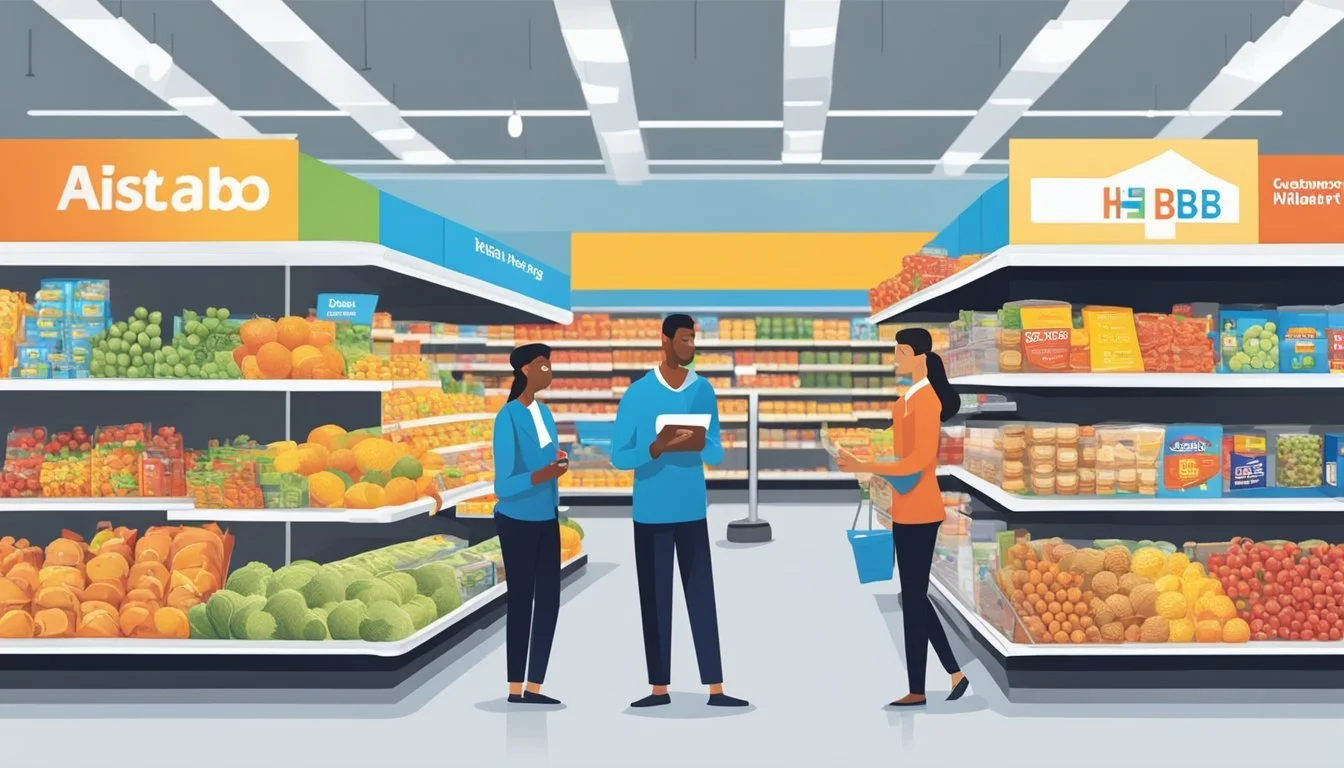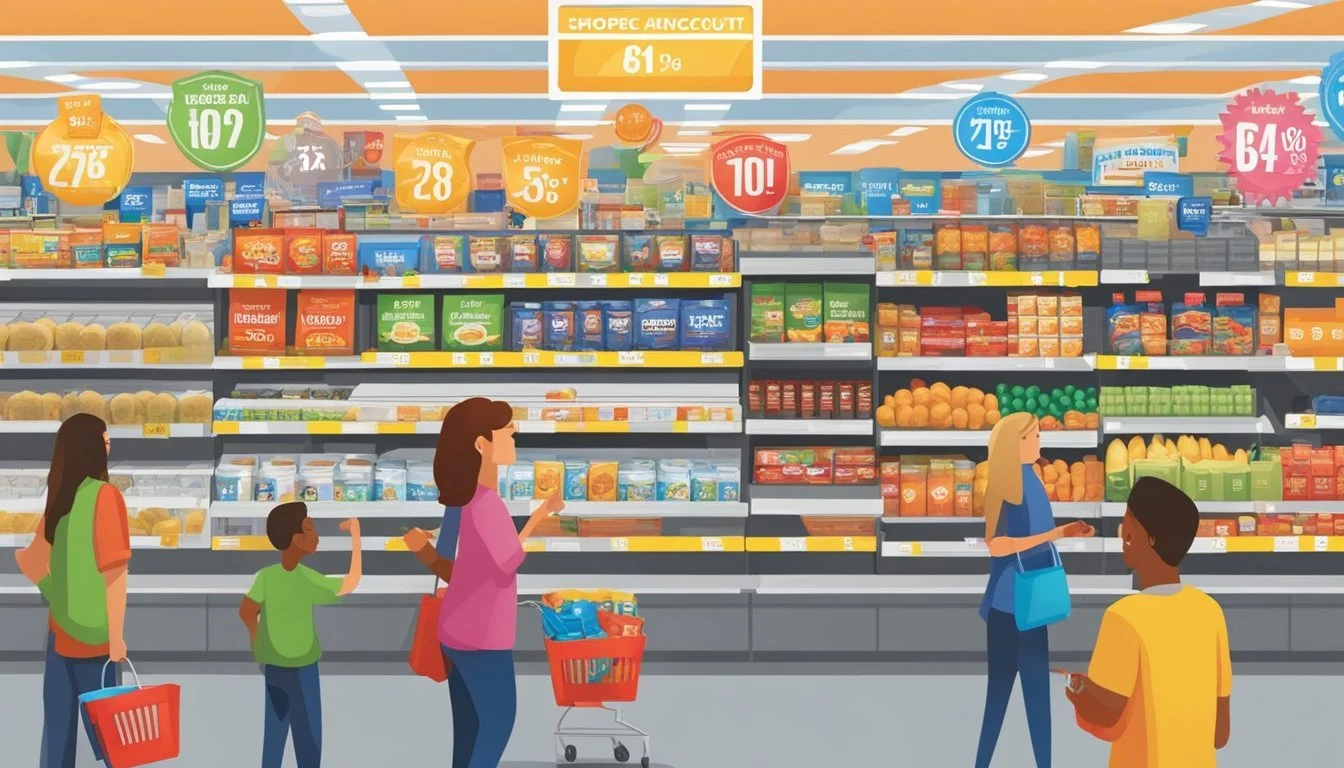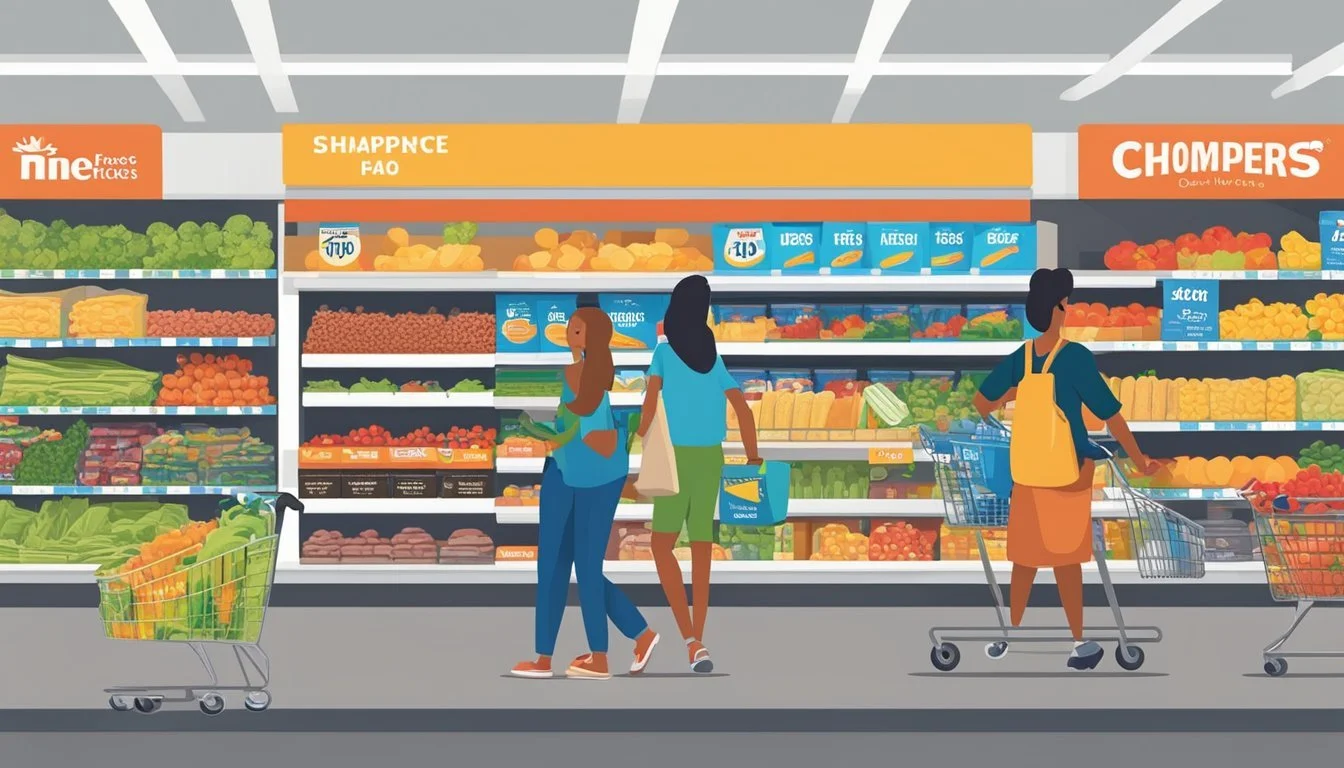Is Walmart Cheaper Than H-E-B?
Comparing Grocery Prices and Deals
Part of Our Grocery Store Guide with Details on Walmart Prices and H-E-B Prices
When shoppers consider where to buy their groceries, price is often a leading factor. Walmart, known for its competitive pricing model, has consistently been perceived as a retailer where consumers can stretch their dollars. On the other hand, H-E-B, a beloved Texas grocery chain, also offers competitive prices with a regional focus. Consumers frequently compare the two when budgeting for groceries, leading to an important question: Is Walmart cheaper than H-E-B?
Analyses of a variety of products from both Walmart and H-E-B across numerous categories have been conducted to ascertain which retailer offers the lower prices. The comparisons typically involve a range of items, ensuring that the examination of prices is comprehensive and applicable to the average shopper. This approach helps illuminate general pricing trends and provides insight into which store could potentially offer more savings.
It is not just a matter of overall cost comparison; the assessment often dives deeper into specific categories. These investigations reveal that while Walmart may have an edge in one area, H-E-B could be the price leader in another. Such information equips consumers with the knowledge to make informed choices based on their shopping preferences and needs. Each store's business model, customer loyalty programs, and promotional strategies also play a role in influencing their pricing and value proposition.
Comparing Walmart and H-E-B Pricing
When considering where to shop for groceries, price plays a critical role. Customers often weigh the savings at Walmart against the shopping experience at H-E-B, but the primary focus remains on the cost of essential items such as dairy, eggs, bread, and rice.
Overall Pricing Strategies
Walmart is known for its aggressive pricing strategies aimed at delivering low prices daily. The retailer uses its vast network and purchasing power to offer competitive prices across a wide range of products, with a particular focus on affordable staple groceries. H-E-B, while also offering competitive prices, places a higher emphasis on local sourcing and customer service, which may influence its pricing structure.
Walmart: Lower prices on a broad selection, utilizing scale and efficiency.
H-E-B: Competitive pricing with added focus on local goods and customer experience.
Price Comparison of Essential Groceries
A more detailed look at essential grocery items reveals the subtle differences between Walmart and H-E-B pricing. To provide a clearer picture, here are specific comparisons:
Grocery Item Walmart Price H-E-B Price Dairy Typically lower, due to generic brands and bulk purchasing. Slightly higher, but offers a range of local dairy products. Eggs Offers a variety of options at competitive prices. Also competitively priced, may feature local eggs at a premium. Bread Lower prices with store-brand options available. Variety of breads, including in-store bakery with competitive pricing. Rice Bulk purchasing leads to lower prices on common varieties. Competitive pricing, with possible premiums on specialty rices.
Shoppers will find that the price for basics like bread and rice generally favors Walmart, but H-E-B remains competitive, especially for shoppers interested in local brands or specialty items. When it comes to eggs and dairy, both stores offer a range of prices, though Walmart's generic brands are often positioned as the value choice.
Product Selection and Availability
Choices vary significantly when it comes to product selection and availability at Walmart and H-E-B, with both stores offering a wide range of products including produce, meat, deli selections, and a variety of organic, frozen, and canned goods.
Store Brand Offerings
H-E-B prides itself on a robust selection of store brand items, encompassing everything from snacks to cheese. They provide unique local flavors that cater to their customer base. Walmart, on the other hand, offers a wide range of its own brand products as well, typically priced lower to attract cost-conscious shoppers.
Diversity of Product Lines
Both retailers showcase an impressive diversity of product lines within their stores. Walmart offers an extensive range of brands across various categories, including frozen foods and deli items, appealing to a broad market. H-E-B focuses on curated product lines that often include specialty and high-end options, especially in their organic and meat selections, alongside the mainstream choices.
Stock and Supply Chain Factors
Walmart has a vast and complex supply chain known for its efficiency, which usually results in consistently stocked shelves with products from across the globe. H-E-B emphasizes connections with local producers and suppliers, especially visible in their produce and meat departments, which can lead to a fresher selection but may at times impact availability due to regional sourcing.
Store Services and Customer Experience
When comparing Walmart and H-E-B, customer service quality and in-store promotions are significant factors that contribute to the overall shopping experience. Both retailers offer distinct services and unique marketing strategies that cater to their customer base.
Customer Service Quality
Walmart and H-E-B both prioritize customer service but employ different approaches. Walmart utilizes a more standardized customer service model which is consistent across its numerous locations. They offer services such as a customer service desk for returns and inquiries and have staff members on the floor to assist customers. H-E-B tends to provide a more personalized customer service experience, often tailoring services to the local community. H-E-B also offers a unique service whereby customers can call a store's "Partner" to request specific items to be restocked.
Marketing and In-Store Promotions
In terms of marketing and promotions, Walmart strongly focuses on price matching policies and is known for its Rollback deals that customers can identify easily in-store. They also offer coupons through various channels, aiming to ensure that customers get value for their purchases.
H-E-B, on the other hand, has a robust marketing strategy that includes digital coupons, weekly deals, and Combo Loco promotions where customers can buy one product and get another free or at a discounted price. H-E-B is attentive to customer-specific discounts and essential worker discounts, offering additional savings to those who qualify. They also implement targeted marketing tactics to connect with their customer base, encouraging brand loyalty.
Both stores aim to create a positive shopping experience through their service offerings and tailored marketing efforts, understanding that this can be just as crucial as competitive pricing.
Geographic Presence and Accessibility
Walmart and H-E-B both have distinct geographic footprints that influence their accessibility to consumers. Walmart boasts a larger national presence while H-E-B's locations are predominantly centered in Texas, providing strategic accessibility in this region.
Number of Locations by Region
Walmart operates across the entire United States with a significant number of stores in Texas. In contrast, H-E-B has established a strong presence specifically within Texas and northeast Mexico. For instance, in cities like San Antonio and Austin, H-E-B is a household name with numerous locations catering to the local populations.
Walmart: Over 4,700 stores in the U.S.
H-E-B: More than 340 stores, primarily in Texas
Real Estate and Store Placement
Walmart and H-E-B's approaches to real estate and store placement further reflect their strategic goals. Walmart often positions its stores to be highly accessible from major highways and typically includes expansive parking lots to accommodate a high volume of shoppers.
Walmart: Utilizes large-scale real estate often located in central and easily accessible areas.
H-E-B: Chooses locations with a focus on high local demand, often finding prime real estate within more urban areas of Texas where space for large parking lots and expansive stores might be more limited compared to Walmart's typically larger plots.
Brand and Company Strategies
In examining the competitive landscape between Walmart and H-E-B, it is essential to consider the distinct strategies each brand employs. These strategies heavily inform their market presence and consumer perception.
Marketing and Brand Recognition
Walmart leverages its vast network of stores and its reputation for low prices to maintain and grow its brand recognition. Marketing efforts often highlight Walmart’s commitment to providing consumers with value through everyday low prices. The company’s scale allows it to engage in aggressive pricing strategies that further reinforce its market position as a cost leader.
H-E-B, although smaller in size, counters with a strong local brand identity, particularly in Texas. Its marketing strategies are tailored to highlight the company's deep community roots and focus on localized customer experiences. These efforts resonate with a loyal customer base, yielding a high level of brand recognition within its core market.
Company Values and Market Positioning
Walmart’s values are centered on the concept of saving people money so they can live better. This philosophy is entrenched in their business operations and is evident in their vast product offerings at competitive prices. Walmart's positioning as a global retail leader is sustained by their continuous drive for efficiency and strategic use of technology to keep costs down.
H-E-B, on the other hand, focuses on the quality of products and services, and their community engagement as part of their core values. Their market positioning is intertwined with a commitment to high standards and local partnerships, distinguishing them from competitors. This strategy does not just appeal to consumer loyalty but also establishes H-E-B as a culturally attuned brand within its operational regions.
Special Deals and Discounts
Both Walmart and H-E-B offer a variety of ways to save, with each store having its own approach to special deals and discounts. Shoppers can reduce their grocery bills through strategic use of coupons, loyalty programs, and taking advantage of special savings options.
Coupons and Savings Programs
Walmart is known for its everyday low pricing, but it further helps shoppers save through the use of manufacturer coupons and occasional in-store promotions. Shoppers can also benefit from Walmart's Savings Catcher feature within the Walmart app, which compares prices with top competitors and offers the difference back if a lower price is found.
Coupons: Accepts manufacturer coupons.
Walmart app: Offers ‘Savings Catcher’ feature for price comparison refunds.
H-E-B provides its own unique savings programs, including digital coupons available through the H-E-B app and website. Additionally, H-E-B often has in-store deals that can be quite significant, particularly their "Combo Loco" offers where buying one product gets you another free or at a reduced price.
Digital Coupons: Accessible via the H-E-B app and website.
In-Store Promotions: Includes ‘Combo Loco’ deals.
Store Loyalty Benefits
Walmart does not currently offer a traditional loyalty rewards program. However, customers can take advantage of the Walmart+ subscription, which provides benefits such as free shipping and delivery from your local store, and discounts on fuel at participating stations.
Walmart+ Subscription: Provides various shopping benefits for a monthly fee.
H-E-B has its own loyalty program that rewards customers for their regular purchases. They offer special deals and discounts tailored to returning customers, who earn points that can be redeemed for future discounts. They also run programs like "Primo Picks" highlighting unique products at discounted prices.
Loyalty Rewards: Earn points towards future purchases.
Primo Picks: Exclusive discounts on selected products.
While neither store offers a subscribe and save option, they both have policies to honor certain demographic discounts. However, specifics on teacher and veteran's discount policies may vary by location, and customers should inquire at their local stores for eligibility.
Demographic Discounts: Policies for teacher and veteran discounts may be available.
Payment and Financing Options
When comparing the payment and financing options of Walmart and H-E-B, customers can expect a variety of methods and plans. These options cater to different needs and preferences, offering convenience and flexibility for shoppers.
Diversity of Payment Methods
Walmart and H-E-B both accept a range of payment options, ensuring that customers have multiple ways to complete their transactions. Walmart supports traditional forms such as cash, debit cards, and credit cards, as well as digital wallets like PayPal. H-E-B also accepts typical payment methods including credit and debit cards. Notably, Walmart has integrated Apple Pay into its payment system, making it convenient for iPhone users to pay using their devices.
Financing and Installment Plans
For customers looking to finance their purchases, both Walmart and H-E-B offer installment plans. Walmart has partnered with Affirm Financing Support, enabling shoppers to buy now and pay over time with a clear, fixed payment schedule. This service is available for a range of product categories and can be used for both online and in-store purchases.
H-E-B has yet to announce a partnership similar to Walmart's Affirm, which could be a deciding factor for customers who need financing options. However, shoppers at H-E-B can use Afterpay Financing Support in certain contexts, allowing for payment in four installments over time. This can provide a budget-friendly option for managing larger expenses without upfront payment in full.
Comparative Analysis of Extra Services
When considering Walmart and H-E-B, the extra services they provide, particularly in shipping and customer conveniences, play a crucial role in defining the overall shopping experience.
Shipping and Return Policies
Walmart offers a variety of shipping options, including free two-day shipping on eligible items for orders over $35. Customers can also take advantage of Walmart's free in-store pickup service. Walmart’s return policy allows customers to return items within 90 days of purchase with or without a receipt.
Free Shipping: Orders over $35 on eligible items
Price Adjustment: Available within a specific period after purchase
International Shipping: Available on select items
H-E-B, primarily servicing Texas, does not offer widespread shipping options due to its more localized approach. However, it provides customers with convenience through curbside pickup and in some locations, delivery services. H-E-B’s return policy ensures customer satisfaction by accepting returns at any of their store locations.
Free Shipping: Not a standard practice, varies by promotion
International Shipping: Not widely available
Additional Customer Conveniences
Walmart adds value to its customers’ experience with services such as gift wrapping and a user-friendly mobile app that simplifies the shopping process. The retailer's price adjustment policy is in place to assure customers they receive the best value.
Gift Wrapping Services: Available for a fee during the online checkout process
Mobile App: Provides a seamless shopping experience with features like Walmart Pay
H-E-B does not widely advertise gift wrapping services but focuses on providing a personalized shopping experience. Their mobile app includes features such as digital coupons and a shopping list to enhance customer shopping efficiency.
Mobile App: Offers digital coupons and facilitates shopping with an organized list feature
Community Engagement and Sustainability
Walmart engages in a variety of community and sustainability initiatives focused on creating a positive impact both locally and globally. These efforts include sustainability commitments and strategies aimed at enhancing equity in the communities they serve.
Local and Global Impact Initiatives
Walmart’s engagement with local communities extends through its vast network of stores and the promotion of local events and programs. At a global scale, Walmart commits to significant philanthropic endeavors, evident in its disaster relief contributions where it donated over $38 million to hurricane relief in FY2018. The company’s volunteer efforts are also notable, with associates contributing more than 850,000 hours to community service in the U.S. during the same period.
In terms of local grocery impact, Walmart maintains a presence within close range of consumers which facilitates community interaction. The company reports that its stores and clubs in the U.S. are within 10 miles of approximately 90% of the population, thereby supporting accessibility to affordable goods and local community engagement.
Sustainability and Equity Commitments
Walmart’s sustainability commitment is evident in its product sourcing and efforts to minimize environmental impact. The company achieved at least 95% "more sustainable" certification for commodities such as seafood, bananas, coffee, and tea in FY2023, pointing to a dedication to environmental stewardship. They also prioritized products that meet standards for personal well-being and environmental care through the Built for Better online shop.
Their commitment to racial equity intersects with sustainability efforts. Walmart seeks to support communities and promote equity by maintaining an inclusive approach to hiring, opportunities for advancement, and by assessing the impact of its practices on diverse populations. This is part of a broader agenda in addressing systemic racial disparities, both within the organization and in the communities it serves.
Walmart's focus on equitable wages is another aspect of its social sustainability efforts. The average wage of a full-time, hourly store associate in the U.S. stood at $14.26 per hour in March 2019, with total compensation and benefits averaging $19.31 per hour, indicating a commitment to fair compensation as part of its broader sustainability and equity strategy.
Future Trends in Grocery Retail
The grocery retail sector is gearing up for transformative changes propelled by advancements in technology and shifts in customer behavior. Companies are positioning themselves to leverage these trends, ensuring they stay competitive in an evolving market.
Technology and Customer Behavior
Consumers are increasingly turning to technology for convenience in their shopping experiences. Apps are at the forefront, allowing customers to shop virtually, access exclusive deals, and reorder favorites with ease. Grocery retailers are also investing in data analytics to understand and predict shopping habits, enhancing their marketing strategies.
Moreover, the rise of influencer marketing programs within the grocery sector is impacting purchasing decisions. Retailers are collaborating with influencers to reach a wider audience and capitalize on the trust that influencers have built with their followers.
Predictions for Market Evolution
The grocery market is expected to continue its rapid expansion, with a forecasted growth implying a more than doubling in size by the mid-21st century. Retailers that integrate comprehensive data portability policies will be able to offer a personalized shopping experience by securely moving customer data across different platforms.
Walmart, with significant investments in e-commerce, is likely to strengthen its market position, while companies like Amazon, H-E-B, Costco, and Sam's Club are recognized for being well-prepared for the future. They are expected to focus on technological integration and customer-centric services to drive growth and customer loyalty.










